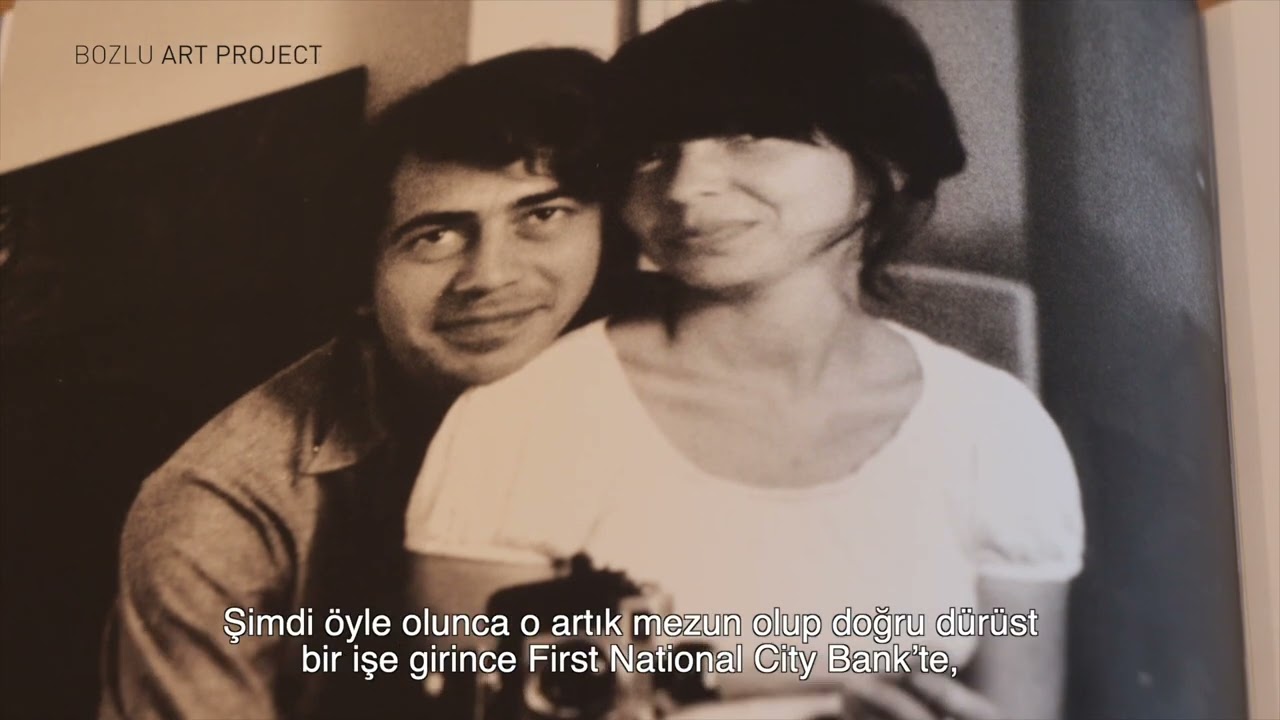Do Birds Perch on Goddesses’ Crowns?
Güven Turan
Every Can Göknil exhibition is itself a work of art in its own right. That’s because each of her exhibitions develops organically within the context of a single, overarching view. Until quite recently, Göknil has been taking the oral and written traditions of Anatolian folk culture as the bases for her shows; this time, she carries us back–much, much further back–taking another outgrowth of the soil of Anatolia as her starting point: Neolithic mother goddesses. Anatolia is where the Mother Goddess cult, the first human religion, was born and developed and from where it spread in waves, creating hundreds of new goddesses for the mythologies of the eastern Mediterranean. Idols of the Mother Goddess, consisting of depictions of a heavy-breasted, steatopygic seated figures or else highly abstract cult objects, can be found in many museums in Turkey and elsewhere, where they serve as evidence of an age when the human race dwelt in a dream world.
As the famous Jungian psychologist Nuemann takes pains to point out, mother goddesses were not the mothers of goddesses but rather goddesses who were mothers; what’s more, in many of their aspects, they live on even today as “archetypes” in the inner worlds and dreams of men as well as of women. It is the mystical power of that archetype, which as first born of the soil on which we live, that Göknil reveals for us to see at this show.
What the artist has done here is more than just make reproductions on canvas of the figurines that are locked up behind the glass panes of museum display cases however: in fact she has recreated the Mother Goddess mythos, investing it with new–and current–life. You may yourself have seen figures of the Mother Goddess in a museum somewhere; but have you ever seen one with a rooster that was perched on her head? And having taken that as her point of departure, the artist next confronts us with the image of a goddess wearing a crown that supports a Tree of Life with birds perching and flowers in bloom on its branches. And what of the goddesses who kept lions? (The originals of these figures are the clearest proof that lions as well as leopards used to dwell and roam freely in Anatolia.) In what amounts to great social leap forward, Göknil has her goddess standing accompanied by her man, who sports a lion’s face.
Mother goddesses with markings that extend from their heads (and generally provoke debates as to whether these are supposed to be horns or crescent moons) come together while birds flock around their heads. This Mother Goddess over here is a “killer queen”– a “terminator”; that one over there is a life-giving source of abundance and joy whose identity as a fountain of nothing but life and fertility reminds us that we are not really so very far removed from the age in which people believed that the Mother Goddess walked abroad upon the earth.
Putting the comprehensive overview aside for the moment, there are in this particular Göknil show a few points that distinguish it, artistically speaking, from previous ones. For one thing, the cloth collages and lines of yarn that we have become accustomed to seeing in her exhibitions are absent this time. For another, there is a noteworthy hardening–a crystallization–in the artist’s attitude towards color. Green, a color that hardly ever appeared in her paintings before or, if it did, consisted of no more than a couple of spots, now forms the complete background of one canvas. Of course the extremely pale pastels and the stain-like forms that she creates with them giving the impression that they’ve melted into one another are also here, too. Looking at it all, you recognize Göknil’s style at first glance; but then those huge blobs of brilliant red start to impinge on your sensibilities and…
Also in evidence in the work at this show is wood–as if to indicate that mother goddesses were also the deities of tree and forest cults. This may take the form of a Hittite deer figure, as in the triple compositions. It may also be a pictorial dimension that the artist adds to a picture’s frame–a device she frequently has recourse to. Indeed, some of the frames are so juxtaposed in the combination of image and installation that it becomes difficult to tell where one ends and the next begins. Works that combine wood and paint in such a fashion somehow inspire an odd iconic feeling in the viewer–though of course the artistic eye and technique are quite different. And that impression does not stem solely from the materials: it also arises from the limited palette of colors chosen and employed to link just these elements. But I think that what really provokes the feeling that we’re looking at icons is a sensitivity that Göknil imparts to her mother goddesses: it is the same sensitivity that liberates her subjects from museum glass cases and from being objects of interest only to archaeologists, invest them instead with an aura that is both mythical and mystical. Think of a painting of a mother and child on the one hand and one of the Virgin Mary and Infant Jesus on the other: isn’t the thing that distinguishes them the sensitivity that the artist employs in dealing with her subjects?
Paint and wood are not the only media through which mother goddesses make their appearance in this exhibition: there’s also watercolor as well. These paintings are, for the most part, the same; but the deftness–the “joy” if you will–that is inherent in watercolor, as well as the Oriental-like compositional arrangements that the artist has been having recourse to for some time now when working in this medium, impart to the images a completely new appearance. Can Göknil’s watercolor mother goddesses are less imperious and less haughty: instead, they’re more compassionate, more “flowery”.



